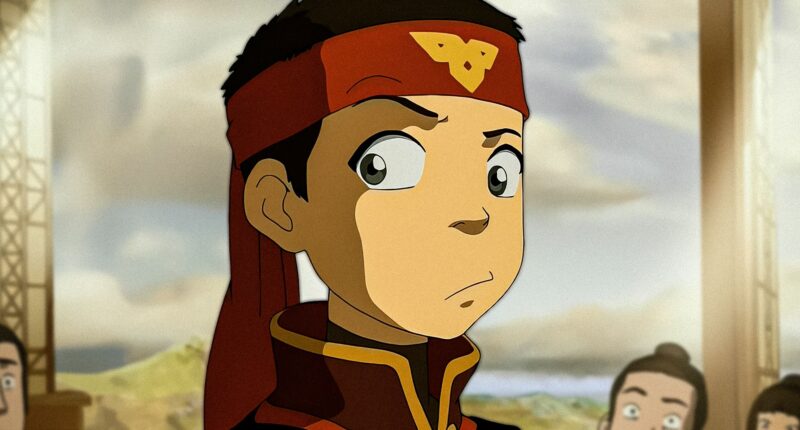From its debut in 2005 to its finale in 2008, Avatar: The Last Airbender told one of the most gripping fantasy stories in animation history. Packed with complex themes, emotional character arcs, and inventive worldbuilding, it’s no wonder an Avatar: The Last Airbender rewatch is a common ritual for fans. With every revisit, familiar moments feel richer, sharper, and more emotionally charged.
Part of the beauty of Avatar: The Last Airbender is how early moments gain significance once you know the full story. Every small exchange, subtle choice, and quiet pause can take on new meaning. Many episodes that were simply great on first watch become essential when viewed again, revealing layers of character depth and narrative foreshadowing that weren’t fully apparent the first time around.
Several ATLA episodes don’t just hold up on a rewatch -they rise to the top as some of the most crucial in the series. These moments offer early glimpses into the emotional cores of characters like Zuko (Dante Basco), Aang (Zach Tyler Eisen), and Katara (Mae Whitman), rewarding fans with new insights and emotional payoffs they might have missed before.
9
The Cave Of Two Lovers (Season 2, Episode 2)
An Early Adventure Becomes A Key Milestone In Aang And Katara’s Relationship
On a first watch, “The Cave of Two Lovers” can feel like a quirky detour in the middle of Team Avatar’s journey. Between the eccentric nomads and the whimsical music, the focus seems lighthearted. However, on an Avatar: The Last Airbender rewatch, its romantic undertones between Aang and Katara feel far more significant.
Knowing they eventually end up together, moments like their kiss in the dark carry a weight that’s easy to overlook initially. What once seemed like a simple moment of comfort becomes a symbolic milestone in their evolving bond. Katara’s willingness to trust Aang in the uncertain darkness becomes a powerful indicator of their eventual closeness.
This episode also works as a thematic parallel to Aang and Katara’s entire relationship – overcoming uncertainty together to find the light. It may not be an epic battle or major plot twist, but “The Cave of Two Lovers” is proof that even the quietest episodes can be vital to Avatar’s emotional tapestry.
8
The Avatar And The Fire Lord (Season 3, Episode 6)
The Origins Of The 100 Year War Reshape Zuko’s Entire Identity
“The Avatar and the Fire Lord” reframes ATLA’s central conflict by revealing the intertwined fates of Avatar Roku and Fire Lord Sozin. For first-time viewers, it’s a compelling history lesson. On a rewatch, it’s an emotional bombshell, especially knowing where Zuko’s journey leads.
The episode ties Zuko’s lineage to both heroism and tyranny, showing that he’s the descendant of both Roku and Sozin. This revelation deepens his internal struggle, making his later choices resonate even more. Understanding the roots of the Fire Nation’s war gives added gravity to every political and personal decision he faces.
Beyond being an essential moment for Zuko, this ATLA episode enriches the audience’s understanding of how personal relationships can shape – and doom – entire nations. Once you know how the series concludes, “The Avatar and the Fire Lord” feels like a turning point disguised as a history lesson, cementing itself as one of the show’s most important chapters.
7
The Ember Island Players (Season 3, Episode 17)
A Comedic Recap Packed With Clever Foreshadowing And Meta-Commentary
At first glance, “The Ember Island Players” is an indulgent bit of pre-finale fun – a parody play retelling Team Avatar’s adventures with hilariously inaccurate details. However, on an Avatar: The Last Airbender rewatch, the episode’s self-awareness and layered humor stand out even more.
The exaggerated portrayals of characters highlight their real insecurities. Katara’s over-the-top speeches in the play mirror her fear of being seen as overly sentimental. Zuko’s melodramatic acting double pokes at his turbulent past. As for the Avatar himself, Aang’s frustration with his depiction mirrors his deeper anxieties about leadership and destiny.
This episode also slyly foreshadows the ATLA finale, with moments in the play eerily predicting the group’s fates. On a second or third viewing, the brilliance of the meta-commentary becomes impossible to miss. “The Ember Island Players” is far more than a comedic detour – it’s a mirror reflecting the team’s growth while hinting at what’s to come.
6
The Blue Spirit (Season 1, Episode 13)
Zuko’s Secret Rescue Of Aang Takes On New Meaning With Hindsight
“The Blue Spirit” is one of the first times viewers see Zuko’s moral complexity. Initially, it’s a tense action episode about Aang’s escape from the Fire Nation. However, on a rewatch, Zuko’s choice to save Aang instead of letting the Fire Nation capture him becomes a crucial piece of his redemption arc.
Knowing the full extent of Zuko’s internal conflict, his actions here feel like an early glimpse of the person he’ll become. His rescue isn’t motivated by kindness – yet – but it shows he’s capable of defying his nation’s goals when his own values are at stake.
This episode also sets up the complicated trust and respect that will eventually grow between Aang and Zuko. It’s an early fracture in Zuko’s identity as a loyal prince, and when viewed after seeing his transformation, it becomes one of the most revealing moments in the entire series.
5
The Tales Of Ba Sing Se (Season 2, Episode 15)
A Quiet Anthology That Reveals The Show’s Emotional Core
Season 2’s “The Tales of Ba Sing Se” trades the epic battles many ATLA episodes thrive on for intimate character moments, and its power only deepens on a rewatch. Each short vignette peels back another layer of the characters, but none hits harder than Iroh’s segment, “Leaves from the Vine.”
On a first watch, Iroh’s quiet grief is moving. On a rewatch, knowing the truth about his son’s death – and Iroh’s backstory as a general – turns the scene into one of the most emotionally devastating moments in the series. It reframes his compassion and wisdom as the hard-earned lessons of a man shaped by loss.
The episode also strengthens the bonds between characters like Katara and Toph (Jessie Flower) or Sokka (Jack De Sena) and his art. It’s a rare chance to pause and live alongside the characters, and with hindsight, every small interaction becomes a piece of the series’ emotional foundation.
4
The Siege Of The North (Season 1, Episodes 19 & 20)
A Dramatic Turning Point For Both Sokka And Zuko
As the two-part finale to ATLA season 1, “The Siege of the North” delivers spectacle and high stakes. However, it also marks a pivotal step in the journeys of Sokka (Jack De Sena) and Zuko. On an Avatar: The Last Airbender rewatch, the episode’s emotional beats land with far greater force.
Sokka’s bond with Princess Yue (Johanna Braddy) gains even more poignancy knowing the personal losses he’ll endure in later seasons. Zuko’s near-death in the snow, driven by his desperation to capture Aang, reads differently once you’ve seen his full redemption arc – it’s a portrait of a young man on the edge of change.
This finale also plants seeds for the spiritual and political consequences that ripple through everything to come in ATLA seasons 2 and 3. With hindsight, “The Siege of the North” is more than a climactic battle – it’s the moment two key characters begin their transformation into the people they’re destined to become.
3
The Storm (Season 1, Episode 12)
Dual Backstories Reveal The Shared Pain Between Aang And Zuko
“The Storm” is one of Avatar’s earliest showcases of its complex character writing. It parallels Aang’s guilt over abandoning his duty with Zuko’s shame and trauma from his father’s cruelty. On a rewatch, these mirrored stories foreshadow the characters’ eventual understanding of each other.
For Zuko, the episode lays the groundwork for his eventual defiance of Ozai (Mark Hamill). Knowing the outcome makes his pain here even more resonant, as it’s the first real look into his humanity.
For Aang, his fears about not living up to the Avatar role gain extra weight once you’ve seen him face Fire Lord Ozai in the finale. “The Storm” connects two characters who seem worlds apart, and with hindsight, its emotional symmetry becomes one of the series’ most striking achievements.
2
Zuko Alone (Season 2, Episode 7)
A Self-Contained Masterpiece That Explains Everything About Zuko
ATLA season 2’s “Zuko Alone” strips away Team Avatar to focus entirely on Zuko’s journey through the Earth Kingdom. Told in parallel with flashbacks to his childhood, the episode unpacks his complicated family life, revealing the roots of his anger, insecurity, and resilience.
On a first watch, it’s a tragic character study. However, on an Avatar: The Last Airbender rewatch, every sceme feels like a blueprint for Zuko’s future decisions – from his compassion for a struggling family to his unwillingness to stand by while others are wronged.
Knowing Zuko’s eventual redemption makes his quiet acts of kindness here even more significant. “Zuko Alone” is more than a detour; it’s the Rosetta Stone of his character, translating his later choices into something deeply personal and inevitable.
1
The Crossroads Of Destiny (Season 2, Episode 20)
Zuko’s Betrayal Changes The Course Of The Entire Series
As the Avatar: The Last Airbender season 2 finale, “The Crossroads of Destiny” is unforgettable for its high-stakes battles and shocking twists. However, the true gut-punch comes from Zuko’s choice to side with Azula (Grey DeLisle) over Iroh, shattering the trust he’d begun to build with Team Avatar.
On a rewatch, this betrayal is even more heartbreaking because viewers know Zuko will eventually regret it. His decision nearly costs Aang his life and cements Azula’s hold over him – a low point that makes his later redemption all the more satisfying.
The episode also heightens the tragedy of Iroh’s imprisonment and Katara’s near-healing of Aang. With full knowledge of the series’ resolution, “The Crossroads of Destiny” stands as one of the most emotionally devastating – and narratively essential – episodes in Avatar: The Last Airbender.















